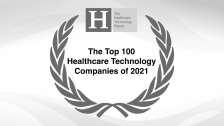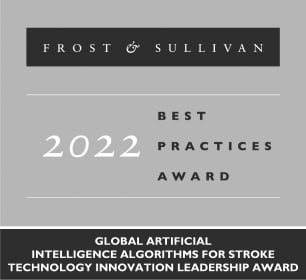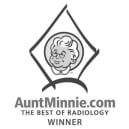[Insights in AI Virtual Series Webinar] Join us April 23 as Dr. Vishal Jani shares proven approaches to help improve outcomes for hemorrhagic stroke patients.
At RapidAI, we understand that technology is just one part of any successful patient outcome. From the person who picks up the phone to call 9-1-1, to the first responders, doctors and other healthcare professionals providing care, there are many heroes in each story. Here, we spotlight these incredible individuals who are saving and changing lives in our Rapid Hero Stories.
Malcolm Daly knows a thing or two about survival. The experienced climber lost a leg to frost bite following a climbing accident on the Alaska Range in 1999. In the two decades since then, Daly, 65, has also endured multiple strokes and a heart attack. His survival skills were most recently put to the test in April 2020 when he suffered his third stroke. Luckily, he had a team of dedicated healthcare professionals, equipped with cutting-edge technology, on his side.
Daly’s stroke occurred in his home in Hailey, Idaho, where he and his wife, Karen, had moved just two weeks before from Colorado. Following an afternoon bike ride, Daly decided to take a nap. He remembers not being able to move anything on the right side of his body shortly after lying down. Karen checked in on him a few minutes later and, realizing her husband had a stroke, called 9-1-1.
Daly was transported by EMS to St. Luke's Wood River Medical Center in nearby Ketchum, Idaho, where non-contrast CT, CTA and CT perfusion scans were quickly ordered. Molly Gill, a nurse in the emergency department at Wood River, was part of the team that met Daly upon his arrival. “He presented with some of the most severe symptoms I've seen in my career. Basically, the entire right side of his body was non-functioning,” Gill said, recalling that she had to use her body to pin his right arm against the CT-scanner bed when starting his IV because it kept falling off the bed. Daly, who was also unable to communicate verbally, was determined to have a National Institute of Health Stroke Scale (NIHSS) score of 24. His condition was severe and would have to be treated quickly if he was going to recover.
Wood River Medical Center is a rural critical-access hospital with no urgent on-site neurology expertise, so patient scan results typically have to be reviewed by an on-call radiologist at St. Luke’s Boise Medical Center more than 150 miles away; the fact that the health system is equipped with the Rapid ® imaging platform, however, meant that Daly’s results were delivered automatically to stroke specialists. The entire Boise stroke team was notified immediately as soon as the results were available, regardless of where they were at the time. “I got a notification on my phone, and I immediately looked at it,” said neurointerventional surgeon Dr. Tony Bell. He was also able to view the RapidAI results from Daly’s CT scans directly from his mobile phone using the Rapid Mobile App. “I saw that this was someone who was going to need help, so I immediately started making preparations to get people activated and talking to the teams at the transfer center and Wood River,” Bell said.
® imaging platform, however, meant that Daly’s results were delivered automatically to stroke specialists. The entire Boise stroke team was notified immediately as soon as the results were available, regardless of where they were at the time. “I got a notification on my phone, and I immediately looked at it,” said neurointerventional surgeon Dr. Tony Bell. He was also able to view the RapidAI results from Daly’s CT scans directly from his mobile phone using the Rapid Mobile App. “I saw that this was someone who was going to need help, so I immediately started making preparations to get people activated and talking to the teams at the transfer center and Wood River,” Bell said.
Daly’s RapidAI results revealed that he had a large vessel occlusion of the left internal carotid artery and proximal middle cerebral artery. The call was made to airlift him from Wood River to Boise where Bell would perform a mechanical thrombectomy to remove the clot blocking blood flow to Daly’s brain. Even with the time it took for the helicopter to arrive—typically 45 minutes—the team at Wood River achieved a record-breaking “door-in, door-out” time of 81 minutes.
Once in Boise, Bell completed the thrombectomy, which successfully restored blood flow to Daly’s at-risk brain tissue, in approximately 30 minutes. He was able to leave the hospital two days later with a NIHSS score of 2. Bell chalks up the success of the procedure to one simple factor: time. “If it had taken another hour to get the clot out, I don't think he'd be doing as well as he is,” Bell said.
Now two months after his third stroke, Malcolm Daly is more or less back to his active lifestyle, following a period of intensive speech therapy. He’s managed to channel some of his survivor’s grit into daily bicycle rides, and he’s even planning another climbing trip with friends.
RapidAI gives stroke teams and their patients more of what they desperately need: time. By notifying the entire stroke care team—doctors, emergency personnel and logistics—at the earliest possible moment and giving them the patient images and information they need to make the best possible decisions, they can save lives.
Malcolm Daly caught the climbing bug young. “I started climbing when I was 14 years old, and I've been a climber ever since,” he says proudly. Since scaling his first rockface as a teen, Daly has made a livelihood out of his passion. In 1991, he founded Great Trango Holdings, the parent company of Trango Climbing, an outfitter of climbing gear. He’s sacrificed a lot too, most notably in 1999 when he suffered a terrible fall while climbing near Mount Denali in Alaska. He was stuck on a ledge of the mountain alone for 48 hours in below freezing temperatures while his climbing partner went for help. His determination to survive got him through the ordeal, but he eventually had his leg amputated due to complications from frostbite. The incident has made him something of a celebrity in climbing circles. Dr. Tony Bell, part of Daly’s stroke team at St. Luke’s Boise Medical Center and a climber himself, even recognized his famous patient’s name from an interview he gave on a climbing podcast. Daly has continued climbing since his accident, and his experience inspired him to start Paradox Sports, a non-profit organization that helps make climbing accessible for people with disabilities.
RapidAI results quickly provide clinicians with real-time views of the progression of a patient’s stroke. Malcom Daly’s Rapid CTP results, shown here, revealed a large amount of brain tissue with decreased cerebral blood flow (penumbra), that could potentially be saved from infarction—provided quick action was taken. “He had a mismatch ratio of 3, so there definitely was penumbra. He definitely had salvageable brain tissue,” said Dr. Tony Bell who performed the thrombectomy that restored blood flow to Daly’s brain.
St. Luke's Wood River Medical Center is a small, critical access hospital serving Blaine County, Idaho. Because of its size and location—the nearest large hospital is an hour-and-a-half drive away—team members need to be very much in sync with one another. “Being a rural access hospital poses challenges,” said Molly Gill, an emergency department (ED) nurse at Wood River. “We have an amazing group of ED doctors who really have to be on their game because we don't have the neurologists or the cardiologists on site. This team has to be able to deal with anything that comes through the door until we can transfer the patient out to the appropriate facility.” It’s this teamwork that helped Wood River achieve its fastest “door in, door out” time of 81 minutes with stroke patient Malcom Daly.


